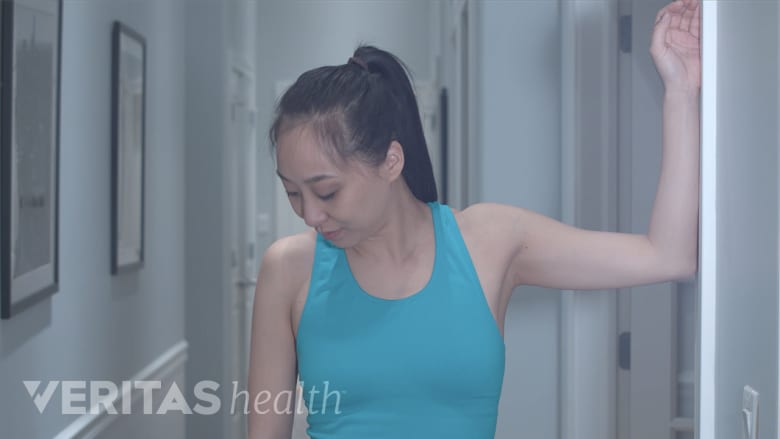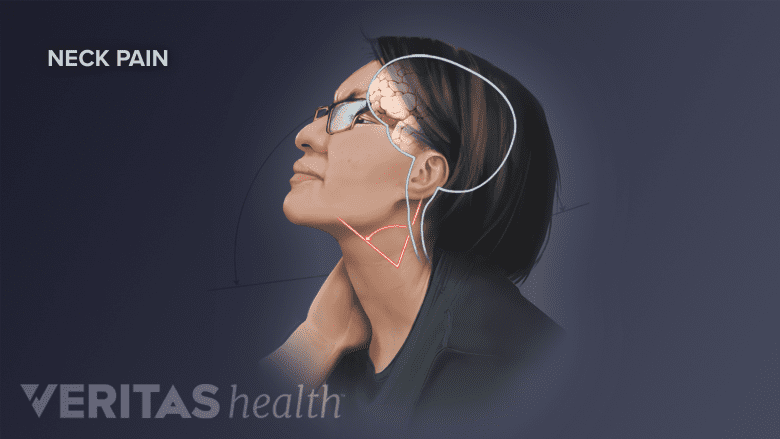When the head and shoulders drift forward due to poor posture, some muscles in the chest and neck can shorten and become tight over time, which can perpetuate the poor posture that is causing neck pain.
The following stretching exercises can help loosen postural muscles and may reduce neck pain.
In This Article:
Corner Stretch

A corner stretch exercise helps stretch the chest and shoulder muscles.
A basic exercise that is important for stretching the chest and shoulder muscles is the corner stretch. It is performed in the corner of a room.
This stretch is done as follows:
- Stand approximately two feet back from the corner, facing into the corner.
- Feet should be together.
- Forearms are placed on each wall, and elbows are a little below shoulder height.
- Lean in as far as possible without pain. Patients will feel a stretch in the front of the shoulders and chest.
- Hold the stretch for about 30 seconds to a minute.
See Easy Chest Stretches for Neck Pain
This stretch can be performed 3 to 5 times per day. It is a good one to do before neck strengthening exercises.
Levator Scapulae Stretch

The levator scapulae stretch helps reduce neck and shoulder blade pain.
There are two levator scapulae muscles—one on each side of the neck—that attach to the top four transverse processes and go down to the shoulder. This muscle can become tight and may be tender where it attaches to the shoulder blade. Stretching this muscle can play a role in reducing neck pain.
The levator scapulae stretch can be performed while sitting or standing as follows:
- Lengthen the muscle by raising the elbow above the shoulder at the side to stretch.
- In this position, first rest the elbow against a door jamb. This action rotates the outside of the shoulder blade up and the inside of it down, which lengthens the levator scapulae muscle.
- Next, turn the head away from the side that is stretching and bring the chin down, stretching the back of the neck.
- Hold this for about 30 seconds to a minute.
If desired, the levator scapulae stretch can be repeated multiple times during the day.
Stretches for the neck should never be done to the point of pain or soreness. Appropriate pain management is often an important part of any neck stretching routine.
Common Neck Stretch to Avoid

Tilting the neck and rotating it in a full circle can cause further damage to the tissues in the cervical spine.
Neck circles, which involve the slow rotation of the head being tilted and rolled in a full circle, have been performed by most people in gym class or while participating in a sport or dance class. However, research shows that the combination of extending the head backward and rotating it puts undue stress on the cervical spine. Compared to other neck movements, neck circles could also cause more compression of the arteries that take blood to the brain.
See Video: The 3 Worst Things You Can Do To Your Neck
Especially for a person who has been dealing with neck pain, neck circles are typically not recommended.
When to Do Stretches
Some experts recommend stretching tight muscles before strengthening weak muscles. The theory is that tight muscles relax after being stretched, and then subsequent strengthening exercises are more effective. However, this theory has not yet been scientifically proven.
Whether neck stretches are done before or after neck strengthening exercises may not have a big effect. In general, it is good to do both stretching and strengthening exercises, so long as they do not increase pain.

